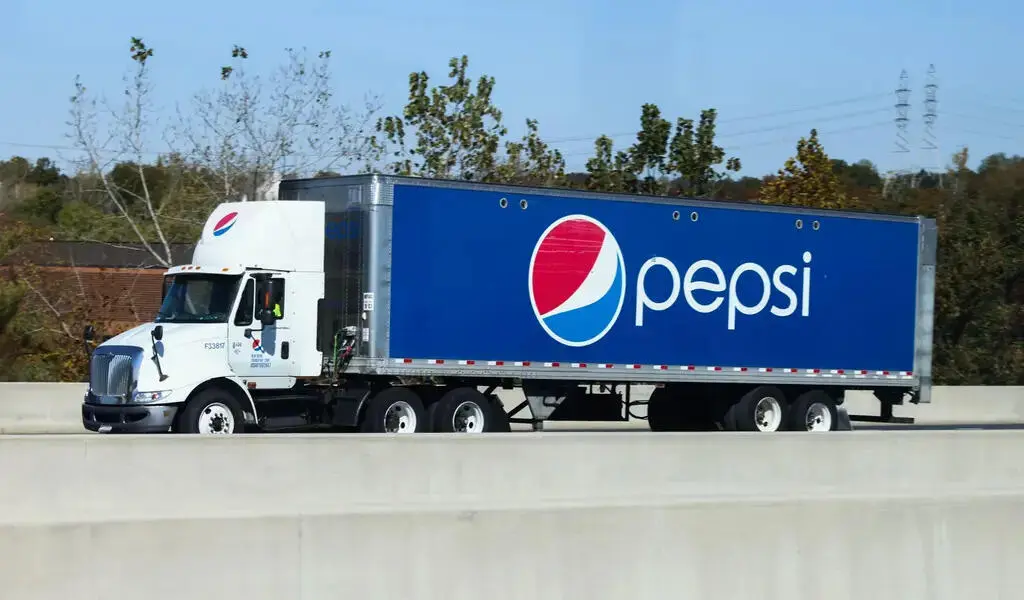Business
How To Do Keyword Research For SEO?

How To Do Keyword Research For SEO – Keyword research is finding and analyzing the words and phrases users type into search engines when looking for information, products, or services related to your niche.
Keyword research helps you understand what your target audience is searching for, how popular and competitive those terms are, and how to optimize your content and website to rank higher.
- Keyword research is an essential part of any SEO strategy, as it helps you to:
- Identify the topics and themes that your audience is interested in and create relevant content that matches their intent and expectations.
- Discover the gaps and opportunities in your niche and find low-competition keywords that you can rank for easily.
- Analyze the performance of your competitors and learn from their strengths and weaknesses.
- Measure the effectiveness of your SEO efforts and track your progress and results over time.
How To Do Keyword Research In 5 steps:
1. Define Your Goals And Objectives
Before you start researching keywords, you need a clear idea of what you want to achieve with your website and content.
- What is the purpose of your website?
- Who is your target audience?
- What are their needs, problems, and desires?
- What are the main topics and categories that you want to cover on your website?
- How do you want to differentiate yourself from your competitors?
A clear vision of your goals and objectives will help you focus your keyword research and find the most relevant and effective keywords for your niche.
2. Brainstorm A List Of Seed Keywords
Seed keywords are the core terms that describe your niche, products, or services. They are the starting point of your keyword research, as they help you generate more specific and long-tail keywords later.
To brainstorm a list of seed keywords, you can use different sources, such as:
- Your own knowledge and expertise about your niche.
- Your existing website content and analytics data.
- Your competitors’ websites and content.
- Online tools and platforms, such as Google Trends, Wikipedia, Quora, Reddit, etc.
- Your customers’ feedback, reviews, surveys, etc.
Try to come up with as many seed keywords as possible, but don’t worry about filtering or sorting them at this stage. Just write them down in a spreadsheet or a document for future reference.
3. Use Keyword Research Tools To Expand Your List
Keyword research tools are online applications that help you find more keywords related to your seed keywords and provide useful data and metrics about them, such as search volume, difficulty, competition, trends, etc. Some of the most popular keyword research tools are:
- Google Keyword Planner: A free tool from Google that allows you to find keywords based on your seed keywords or a website URL, as well as see their monthly search volume, competition level, and suggested bids for Google Ads.
- SEMrush: A paid tool that offers a comprehensive suite of features for keyword research, such as keyword overview, keyword magic tool, keyword gap analysis, keyword difficulty tool, organic traffic insights, etc.
- Ahrefs: A paid tool that provides similar features as SEMrush, but with a different interface and data sources.
- Ahrefs also has a unique feature called keyword explorer that allows you to see each keyword’s click-through rate (CTR) and return rate (RR).
- Moz: A paid tool that offers a simple and user-friendly interface for keyword research, as well as other SEO features such as domain analysis, site audit, rank tracking, etc.
To use these tools effectively, you need to enter your seed keywords into their search boxes and explore the results they provide.
You can also use filters and modifiers to narrow down your results and find more specific and relevant keywords.
For example, you can filter by location, language, device type, search intent (informational, navigational, transactional), etc.
You can also use modifiers such as “how to”, “best”, “reviews”, “comparison”, etc. to find long-tail keywords that have lower competition and higher conversion rates.
As you use these tools, you should add the keywords that match your goals and objectives to your list and keep track of their data and metrics in a spreadsheet or a document for future analysis and evaluation.
4. Analyze And Prioritize Your Keywords Based On Their Data And Metrics
Once you have a large list of keywords, you need to analyze them based on their data and metrics such as:
- Search volume: The average number of times a keyword is searched for per month. This indicates how popular and in demand a topic is among your target audience.
- Keyword difficulty: The level of competition for ranking for a keyword on the search engine results pages (SERPs). This depends on factors such as the number and quality of competing pages, domain authority, backlinks, etc.
- Relevance: The degree of match between a keyword and your content, products, services, or goals. This affects how likely a user is to click on your page and convert after searching for that keyword.
- Intent: The underlying goal or purpose of a user’s search query. This can be informational (seeking knowledge), navigational (seeking a specific website), transactional (seeking to buy something), or commercial (seeking to compare options before buying).
By analyzing these data and metrics, you can prioritize your keywords based on their potential value and impact for your business.
You can use tools such as Google Keyword Planner, Moz Keyword Explorer, or SEMrush Keyword Magic Tool to get these data and metrics for your keywords.
You can also use a keyword matrix to organize and compare your keywords based on these criteria.
A keyword matrix is a table that shows the relationship between different keywords and their data and metrics. For example, you can create a keyword matrix like this:
| Keyword | Search Volume | Keyword Difficulty | Relevance | Intent |
|———|—————|——————–|———–|——–|
| best coffee maker | 49,500 | 67 | High | Commercial |
| how to make coffee | 135,000 | 41 | Medium | Informational |
| coffee maker reviews | 27,100 | 72 | High | Commercial |
| buy coffee maker online | 1,900 | 59 | High | Transactional |
| coffee maker manual | 5,400 | 23 | Low | Navigational |
Using this matrix, you can see which keywords have high search volume, low keyword difficulty, high relevance, and high intent.
These are the keywords that you should focus on optimizing your content for. You can also see which keywords have low search volume, high keyword difficulty, low relevance, or low intent.
These are the keywords that you should avoid or deprioritize.
By analyzing and prioritizing your keywords based on their data and metrics, you can create a more effective and efficient keyword strategy to help you rank higher on the SERPs and drive more traffic and conversions to your website.
5. Study The Competition
Another way to find and evaluate keywords is to look at your competitors’ actions.
You can use tools like MozBar or Ahrefs SEO Toolbar to analyze the websites or blogs that rank for the keywords you are interested in.
You can see how they optimize their content, what keywords they use in their titles, headings, meta descriptions, etc., and how they structure their pages.
You can also look at their backlinks, social media presence, and user engagement. You can use this information to identify gaps and opportunities in your niche and create better content than your competitors.
Conclusion
Keyword research is a critical step in developing an effective SEO strategy.
Following the steps outlined in this article, you can identify the most relevant and high-traffic keywords for your business and target them in your content.
Remember to focus on quality over quantity, and prioritize relevance and user intent when selecting your keywords.
RELATED CTN NEWS:
Why Is The Forex Market The Most Popular Among Traders And Investors?
How To Sell Clothes Online: Tips And Tricks For E-Commerce Success
Business
PepsiCo Reduces Revenue Projections As North American Snacks And Key International Markets Underperform.

(VOR News) – In the third quarter of this year, Pepsi’s net income was $2.93 billion, which is equivalent to $2.13 per share. This was attributed to the company.
This is in stark contrast to net income of $3.09 billion, which is equivalent to $2.24 per share, during the same period in the previous year. The company’s earnings per share were $2.31 when expenses were excluded.
Net sales decreased by 0.6%, totaling $23.32 billion. Organic sales increased by 1.3% during the quarter when the effects of acquisitions, divestitures, and currency changes are excluded.
Pepsi’s beverage sales fell this quarter.
The most recent report indicates that the beverage and food sectors of the organization experienced a 2% decline in volume. Consumers of all income levels are demonstrating a change in their purchasing habits, as indicated by CEOs’ statements from the previous quarter.
Pepsi’s entire volume was adversely affected by the lackluster demand they encountered in North America. An increasing number of Americans are becoming more frugal, reducing the number of snacks they ingest, and reducing the number of times they purchase at convenience stores.
Furthermore, Laguarta observed that the increase in sales was partially attributed to the election that occurred in Mexico during the month of June.
The most significant decrease in volume was experienced by Quaker Foods North America, which was 13%. In December, the company announced its initial recall in response to a potential salmonella infection.
Due to the probability of an illness, the recall was extended in January. Pepsi officially closed a plant that was implicated in the recalls in June, despite the fact that manufacturing had already been halted.
Jamie Caulfield, the Chief Financial Officer of Pepsi and Laguarta, has indicated that the recalls are beginning to have a lessening effect.
Frito-Lay experienced a 1.5% decline in volume in North America. The company has been striving to improve the value it offers to consumers and the accessibility of its snack line, which includes SunChips, Cheetos, and Stacy’s pita chips, in the retail establishments where it is sold.
Despite the fact that the category as a whole has slowed down in comparison to the results of previous years, the level of activity within the division is progressively increasing.
Pepsi executives issued a statement in which they stated that “Salty and savory snacks have underperformed year-to-date after outperforming packaged food categories in previous years.”
Pepsi will spend more on Doritos and Tostitos in the fall and winter before football season.
The company is currently promoting incentive packets for Tostitos and Ruffles, which contain twenty percent more chips than the standard package.
Pepsi is expanding its product line in order to more effectively target individuals who are health-conscious. The business announced its intention to acquire Siete Foods for a total of $1.2 billion approximately one week ago. The restaurant serves Mexican-American cuisine, which is typically modified to meet the dietary needs of a diverse clientele.
The beverage segment of Pepsi in North America experienced a three percent decrease in volume. Despite the fact that the demand for energy drinks, such as Pepsi’s Rockstar, has decreased as a result of consumers visiting convenience stores, the sales of well-known brands such as Gatorade and Pepsi have seen an increase throughout the quarter.
Laguarta expressed his opinion to the analysts during the company’s conference call, asserting, “I am of the opinion that it is a component of the economic cycle that we are currently experiencing, and that it will reverse itself in the future, once consumers feel better.”
Additionally, it has been noted that the food and beverage markets of South Asia, the Middle East, Latin America, and Africa have experienced a decline in sales volume. The company cut its forecast for organic revenue for the entire year on Tuesday due to the business’s second consecutive quarter of lower-than-anticipated sales.
The company’s performance during the quarter was adversely affected by the Quaker Foods North America recalls, the decrease in demand in the United States, and the interruptions that occurred in specific international markets, as per the statements made by Chief Executive Officer Ramon Laguarta.
Pepsi has revised its forecast for organic sales in 2024, shifting from a 4% growth rate to a low single-digit growth rate. The company reiterated its expectation that the core constant currency profitability per share will increase by a minimum of 8% in comparison to the previous year.
The company’s shares declined by less than one percent during premarket trading. The following discrepancies between the company’s report and the projections of Wall Street were identified by LSEG in a survey of analysts:
SOURCE: CNBC
SEE ALSO:
Old National Bank And Infosys Broaden Their Strategic Partnership.
Business
Old National Bank And Infosys Broaden Their Strategic Partnership.

(VOR News) – Old National Bank, a commercial bank with its headquarters in the Midwest, and Infosys, a firm that specializes in information technology, have recently entered into a strategic expansion of their link, which has been in place for the past four years.
This expansion is more likely to take place sooner rather than later, with the likelihood being higher.
For the purpose of making it possible for Old National Bank to make use of the services, solutions, and platforms that are offered by Infosys, the objective of this expansion is to make it possible for the bank to transform its operations and processes through the application of automation and GenAI, as well as to change significant business areas.
This lets the bank leverage Infosys’ services, solutions, and platforms.
Old National Bank Chairman and CEO Jim Ryan said, “At Old National, we are committed to creating exceptional experiences for both our customers and our fellow employees.”
This statement is applicable to Old National Bank. Infosys is carefully managing the business process innovations that it is putting us through, putting a strong emphasis on efficiency and value growth throughout the process to ensure that it is carried out efficiently.
This is a routine occurrence throughout the entire operation. Because of Infosys’ dedication to our development and success, we are incredibly appreciative of the assistance they have provided.
Old National has been receiving assistance from Infosys in the process of updating its digital environment since the year 2020, according to the aforementioned company.
Ever since that time, the company has been providing assistance. The provision of this assistance has been accomplished through the utilization of a model that is not only powerful but also capable of functioning on its own power.
Infosys currently ranks Old National thirty-first out of the top thirty US banks.
This ranking is based on the fact that Old National is the nation’s largest banking corporation.
It is estimated that the total value of the company’s assets is approximately fifty-three billion dollars, while the assets that are currently being managed by the organization are valued at thirty billion dollars.
Dennis Gada, the Executive Vice President and Global Head of Banking and Financial Services, stated that “Old National Bank and Infosys possess a robust cultural and strategic alignment in the development, management, and enhancement of enterprise-scale solutions to transform the bank’s operations and facilitate growth.”
This remark referenced the exceptional cultural and strategic synergy between the two organizations. Dennis Gada is the one who asserted this claim. This was articulated explicitly concerning the exceptional cultural congruence and strategy alignment of the two organizations.
We are pleased to announce that the implementation of Infosys Topaz will substantially expedite the transformation of Old National Bank’s business processes and customer service protocols. We are exceedingly enthusiastic about this matter. We are quite thrilled about this specific component of the scenario.
Medium-sized banks operating regionally will continue to benefit from our substantial expertise in the sector, technology, and operations. This specific market segment of Infosys will persist in benefiting from our extensive experience. This phenomenon will enable this market sector to sustain substantial growth and efficiency benefits.
SOURCE: THBL
SEE ALSO:
American Water, The Largest Water Utility In US, Is Targeted By A Cyberattack
States Sue TikTok, Claiming Its Platform Is Addictive And Harms The Mental Health Of Children
Qantas Airways Apologizes After R-Rated Film Reportedly Airs On Every Screen During Flight
Business
American Water, The Largest Water Utility In US, Is Targeted By A Cyberattack

The largest regulated water and wastewater utility company in the United States stated Monday that it had been the target of a cyberattack, forcing the company to halt invoicing to consumers.
American Water, The Largest Water Utility In US, Is Targeted By A Cyberattack
American Water, based in New Jersey and serving over 14 million people in 14 states and 18 military facilities, said it learned of the unauthorized activity on Thursday and quickly took precautions, including shutting down certain systems. The business does not believe the attack had an impact on its facilities or operations and said employees were working “around the clock” to determine the origin and scale of the attack.

According to their website, American Water operates over 500 water and wastewater systems in around 1,700 communities across California, Georgia, Hawaii, Illinois, Indiana, Iowa, Kentucky, Maryland, Missouri, New Jersey, Pennsylvania, Tennessee, Virginia, and West Virginia.
SOURCE | AP
-

 News3 years ago
News3 years agoLet’s Know About Ultra High Net Worth Individual
-
Entertainment2 years ago
Mabelle Prior: The Voice of Hope, Resilience, and Diversity Inspiring Generations
-

 Health3 years ago
Health3 years agoHow Much Ivermectin Should You Take?
-

 Tech2 years ago
Tech2 years agoTop Forex Brokers of 2023: Reviews and Analysis for Successful Trading
-

 Lifestyles2 years ago
Lifestyles2 years agoAries Soulmate Signs
-

 Movies2 years ago
Movies2 years agoWhat Should I Do If Disney Plus Keeps Logging Me Out of TV?
-

 Health3 years ago
Health3 years agoCan I Buy Ivermectin Without A Prescription in the USA?
-

 Learning2 years ago
Learning2 years agoVirtual Numbers: What Are They For?
